Mercedes-Benz Wants to Become a Software Company, the CEO Says
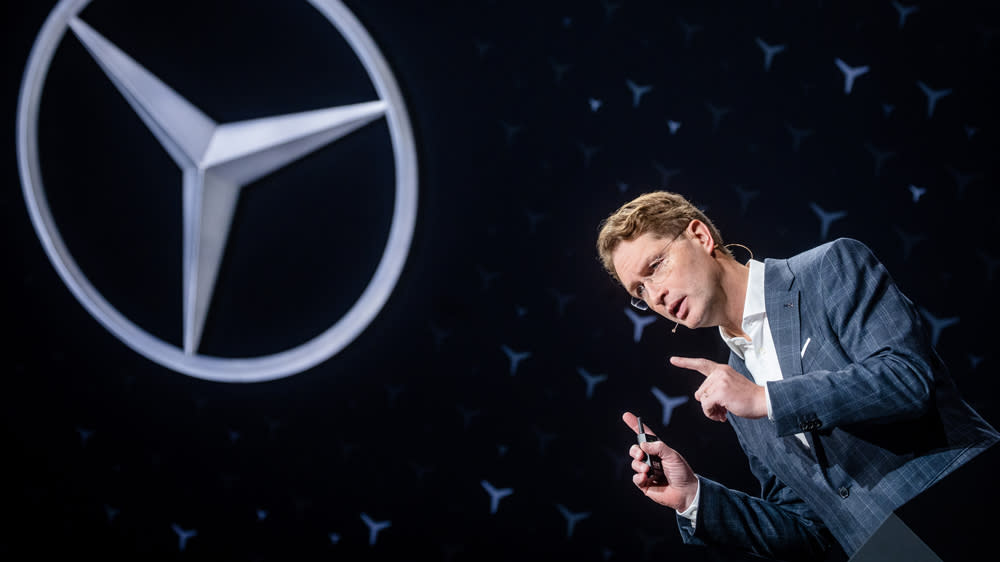
Your next G-Wagen might let you stream movies, play Angry Birds, and hop on a Zoom call—all from an immense set of displays that span the entire dash. As vehicles become more connected, Mercedes-Benz is pushing beyond sheet metal and luxurious materials to build a product portfolio loaded with advanced technology.
“We make things in the physical world, but also increasingly in the digital world,” stated Mercedes-Benz CEO Ola Källenius as he addressed invited guests and investors at a recent event at the marque’s Silicon Valley satellite office in Sunnyvale, Calif. “We are on a journey to also become a software company. We will put supercomputer-like performance into every single Mercedes.”
More from Robb Report
First Drive: The Mercedes-Benz EQE SUV Delivers Power and Poise in a Compact Package
Goldman Sachs May Be Getting a $100 Million Payout Over the Silicon Valley Bank Collapse
First Drive: The Ineos Grenadier Pairs the Defender's Classic Looks With Modern Grunt
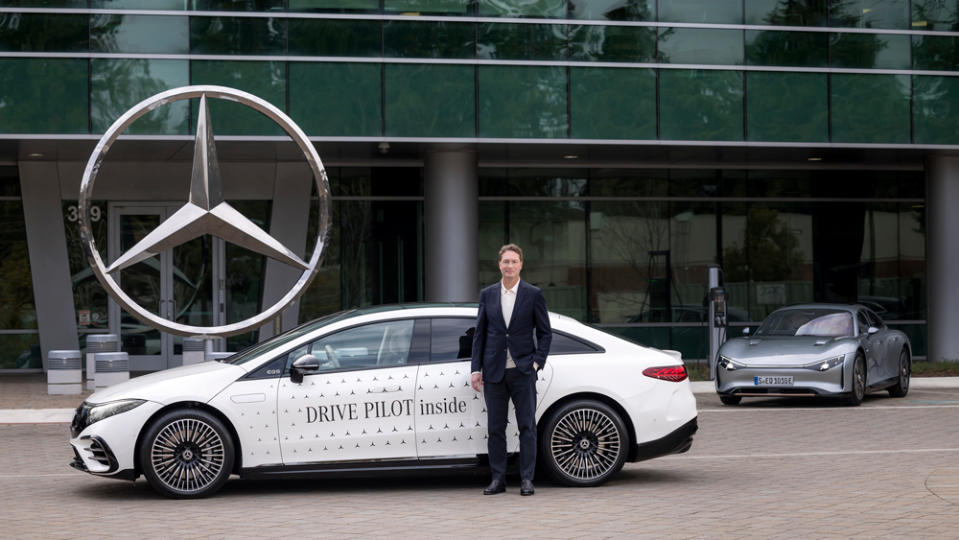
The automaker is working with partners to develop a myriad of products and services, including expanded infotainment options, more sophisticated safety features, and really big screens. Significantly, they will all run on Mercedes-Benz’s own MB.OS platform, expected to debut at the end of 2024 for sale in vehicles the following year.
“We are the architects of our own operating system, a chip-to-cloud architecture that enables the decoupling of software and hardware,” Källenius explains. Because automotive-development cycles span years, compared with months or even weeks for software programs, the result is that in-car technology runs the risk of becoming obsolete long before the lifespan of the car has ended. With MB.OS and over-the-air updates, “the product doesn’t get old, and it actually gets better over time,” says Källenius.
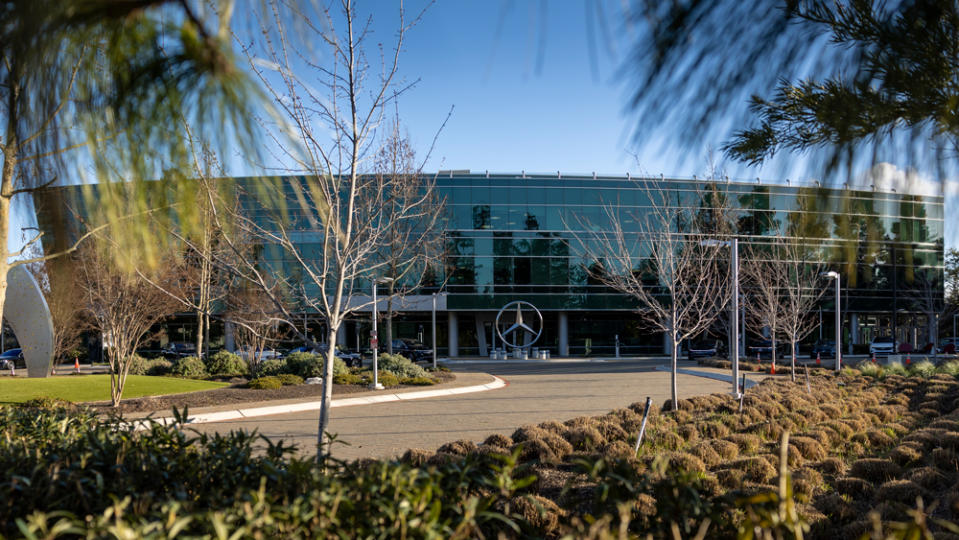
The new operating system is proprietary to Mercedes, but employs technologies from partners, including NVIDIA and Google Maps. “If you’re building a house, you don’t have to lay every tile or every beam by yourself,” says Källenius. “That’s why we leverage the technology partnerships we have, but in the end, it comes together where we control the IP and we control the digital marketplace in our vehicle.” That marketplace is a potential “pot of gold” for Mercedes-Benz, according to Källenius, who disclosed that the company generated 1 billion euros in software-enabled revenue in 2022 and expects that number to be in the “high single-digit-billion euros” by the end of the decade.
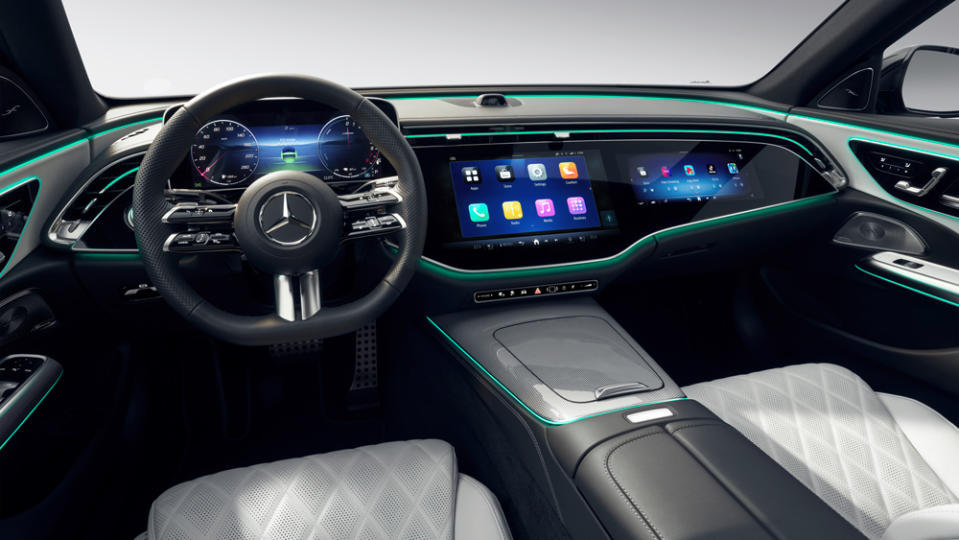
However, while some manufacturers are striving to make their interfaces more of an extension of users’ phones, Mercedes-Benz is deliberately departing from this, creating a distinct interface that it hopes users will prefer. “There’s an ultimate goal not to mirror your phone, to make a great customer experience so there’s no need to plug in your device,” says Markus Schäfer, Mercedes-Benz’s chief technology officer.
Company executives envision the car as an entertainment center, with gaming, social media, video conferencing, music, and other third-party apps. Schäfer touted partnerships with Universal Music as well as myNFT, the latter of which will allow customers to create and display their own private art galleries inside their vehicles.
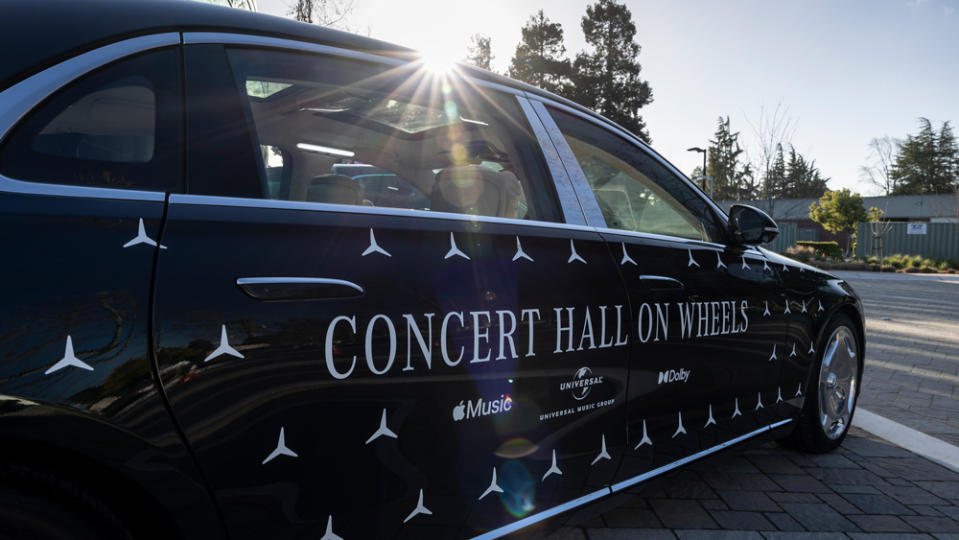
The canvas for this innovative content will be giant, pillar-to-pillar screens, including a separate display for the passenger, with privacy technology that will block potentially distracting games or videos from the driver’s view. Mercedes EQ electric vehicles are already fitted with the gargantuan Hyperscreen, but the tech will soon trickle down to the brand’s gasoline-powered cars as well. First up will be the 2024 E-Class sedan, which will be available with a precursor to MB.OS, along with the third-generation of Mercedes-Benz’s MBUX user interface.
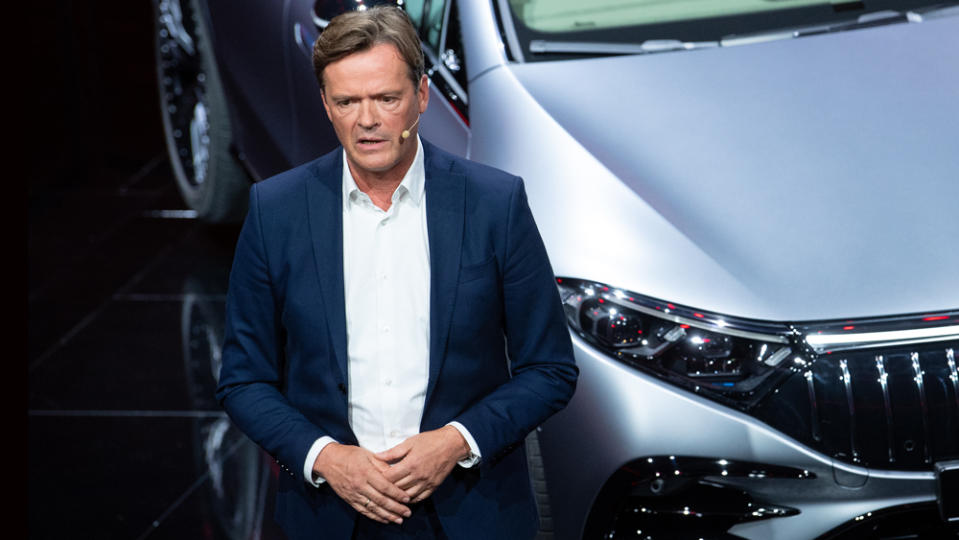
The instrument panel in the new E-Class looks similar to the Hyperscreen but uses a separate, floating driver’s display and forgoes the more expensive, three-dimensionally curved glass. But there’s still plenty of real estate. “It’s important to get bigger and bigger with screen sizes,” says Gorden Wagener, Mercedes-Benz’s chief design officer, during a private viewing of the E-Class interior. “Small displays make an interior look old. So the bigger the better.” The redesigned E-Class cabin also features a plethora of ambient lighting and, perhaps to the chagrin of many, eschews all analog switches and rotary knobs in favor of digital controls, including the volume adjustment.
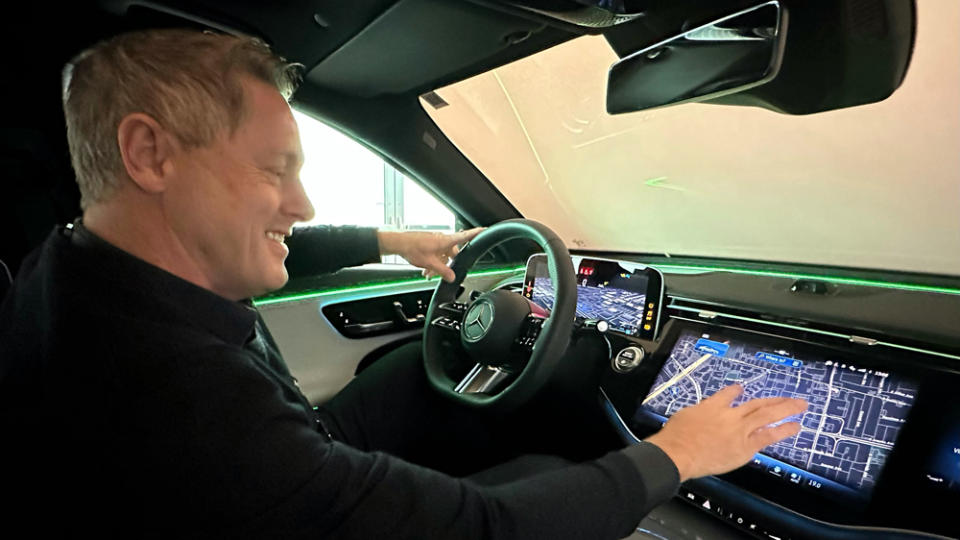
The new E-Class, which will also debut an exterior design yet to be revealed, is slated to arrive in dealerships at the end of this year. If history is any indication, the interior layout could become the template for future internal-combustion-engine models (at least while they last, as the company has said it will go all-electric by 2030, save for perhaps a few small markets). And while Mercedes-Benz didn’t announce an exact timeline or specifics as to which vehicles will get which technology, Källenius confirmed that the forthcoming MB.OS and its related features would eventually appear on “every Mercedes.”
Best of Robb Report
The 15 Best Travel Trailers for Camping and Road-Tripping Adventures
The 2024 Chevy C8 Corvette: Everything We Know About the Powerful Mid-Engine Beast
Sign up for Robb Report's Newsletter. For the latest news, follow us on Facebook, Twitter, and Instagram.

